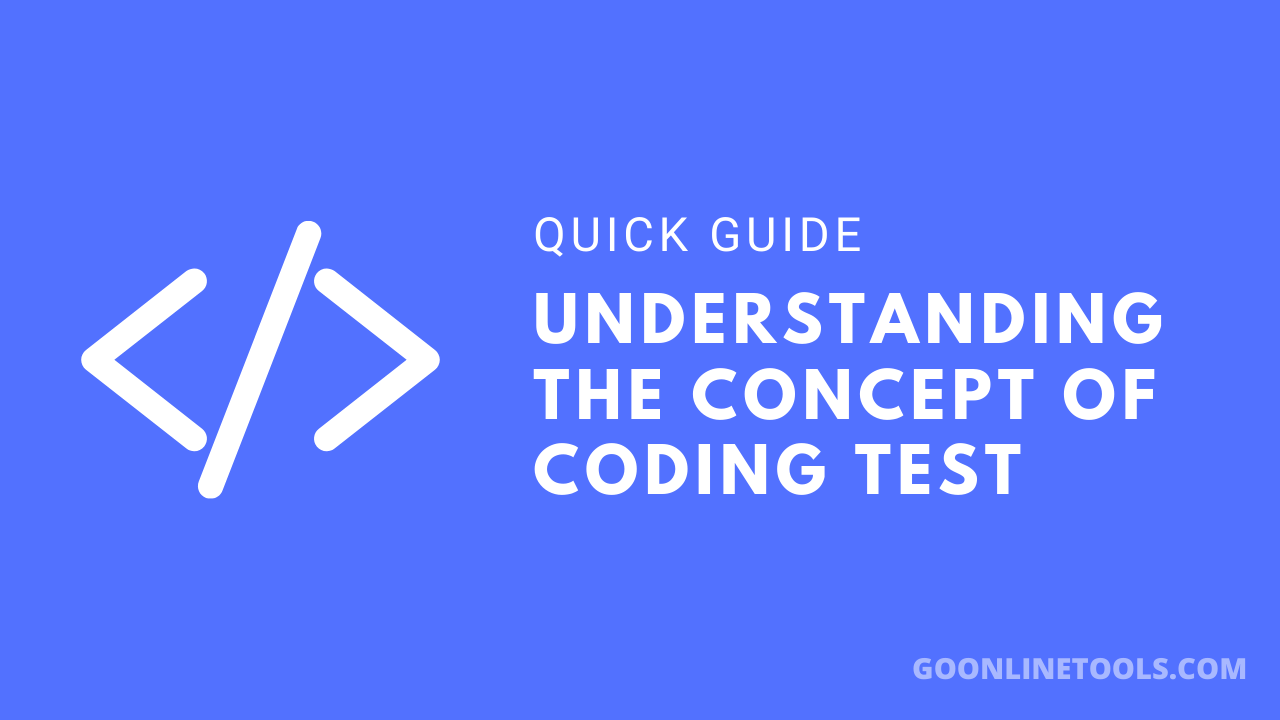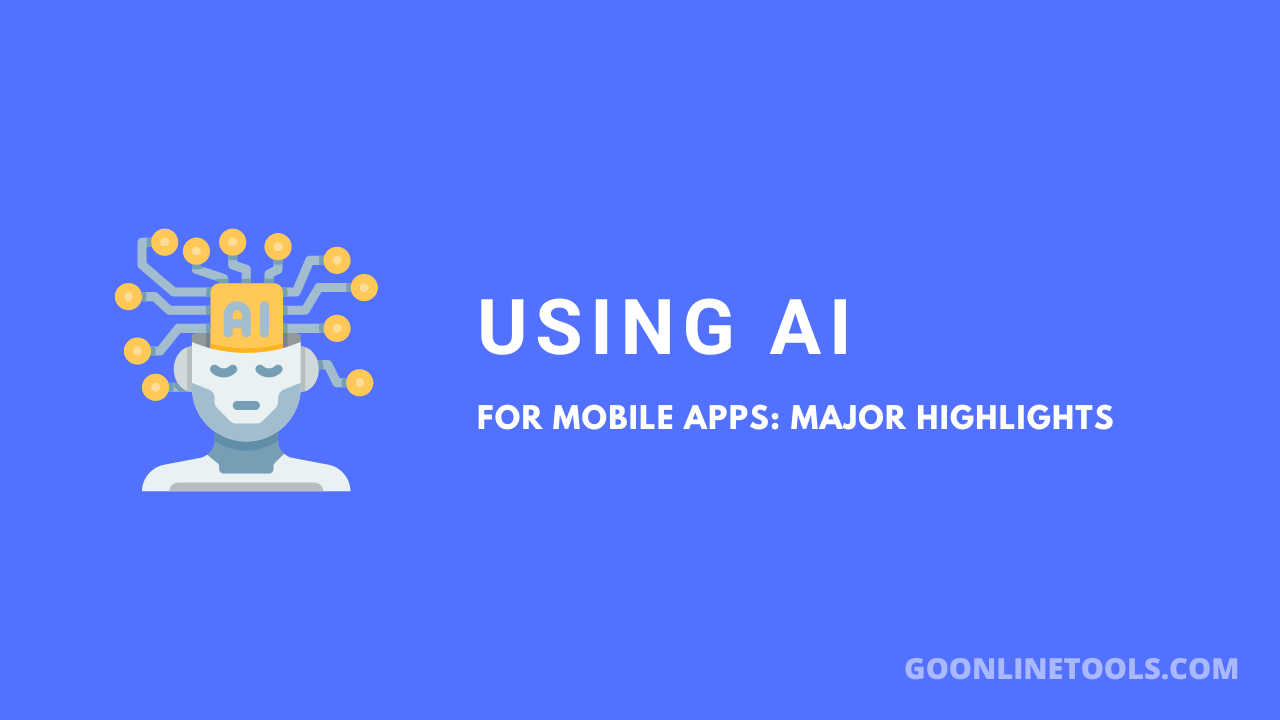
Featured image for "The Top 10 Social Media Management Tools to Consider in 2024"
Managing multiple social media profiles and executing impactful campaigns across diverse platforms has become an indispensable part of modern digital marketing strategies. However, doing so manually is a tedious task that eats up valuable time. This is where social media management tools come into play by streamlining processes, facilitating collaboration between team members, and empowering marketers to boost engagement in a timely, consistent manner.
In this comprehensive guide, we’ll walk through the top 10 tools that leading social media management professionals recommend for 2024 based on key factors like features, ease of use, pricing, and real reviews from satisfied customers.
1. Sprinklr – A Powerful Unified Platform
Sprinklr offers a robust unified platform to manage your social presence, customer experiences, and marketing efforts at scale through a single intuitive dashboard. As one of the most full-featured players, it covers over 30 major digital channels and comes with built-in AI capabilities.
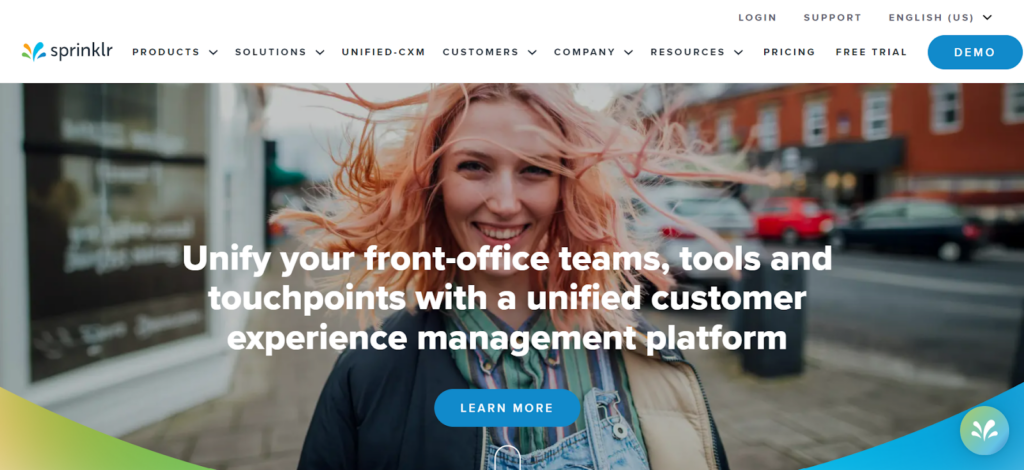
Some highlight features include unified customer experience management, Sprinklr AI for personalized responses, persona apps for specialized workflows, global reach with localization options, and flexible approvals to ensure brand compliance. While its in-depth setup involves learning lots of nuanced functions, satisfied customers praise Sprinklr’s ability to optimize omni-channel experiences seamlessly across sales, marketing, and customer service teams.
Though meant for enterprises, its scalability and customizable design have helped global brands like Microsoft and Uber streamline social media publishing globally while delivering top-notch customer service to diverse audiences.
2. Hootsuite – Comprehensive Yet Complex
Hootsuite is a veteran in the social media management tools space with a wide user base thanks to its complete suite of publishing, engagement, listening, reporting, and advertising features rolled into one place. It offers best-in-class integration for Twitter and intuitive analytics dashboards.
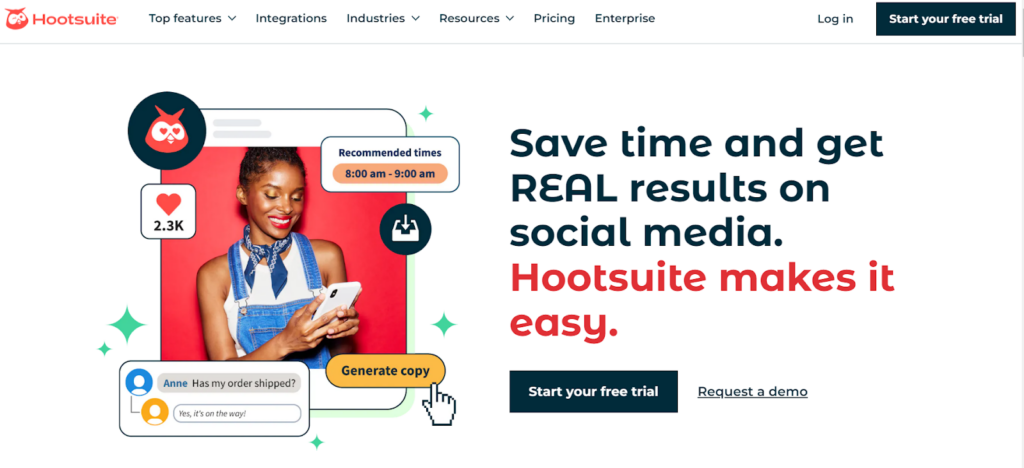
Other favored features include a centralized dashboard, bulk scheduling, AI-powered copywriting, third-party app integration, and smart alerts to flag important conversations. While very good, its interface tends to become complex for non-technical users.
Additionally, limited free access and steep pricing make Hootsuite unsuitable for individuals or budget-conscious small businesses.
Nevertheless, Hootsuite remains the top choice of many large enterprises for managing Twitter with all premium features available and optimizing marketing campaigns at scale across different regions globally.
3. Reputation – Reviews and Local Search Leadership
Reputation’s sweet spot lies in optimizing online reviews and local search visibility – two aspects critical for customer retention. It facilitates monitoring reviews on leading platforms, guided response templates, and robust sentiment analysis to identify pain points proactively.
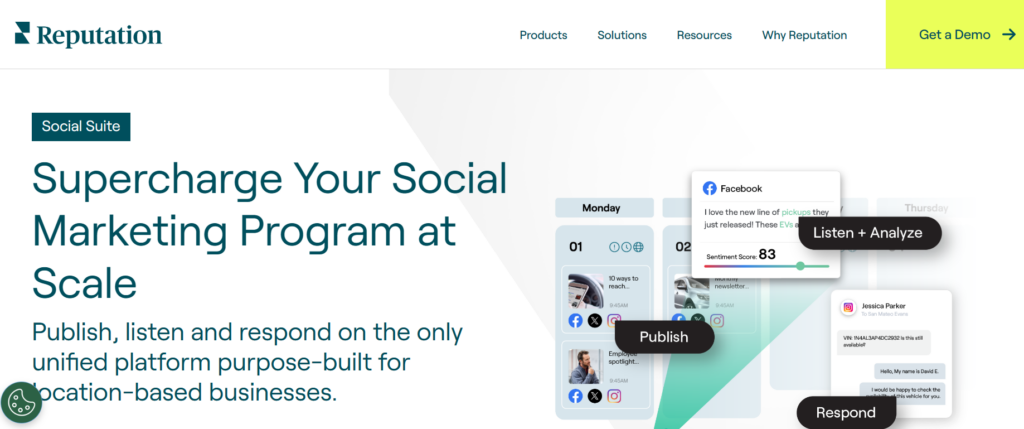
With location-based listing management as another forte, Reputation helps companies improve local rankings and customer satisfaction scores. However, some users point to its rather basic social media engagement capabilities and lack of native AI-powered solutions for tasks like auto-generated responses.
Still, for businesses targeting local customers through reviews, Reputation stays an attractive option to streamline the publishing and reputation management aspects into one place. It has paid rich dividends especially for services industries like restaurants, contractors, and medical verticals.
4. Buffer – Simplicity for Creators and SMBs
As one of the earliest and most popular players in this space, Buffer has mastered delivering core necessities like cross-network publishing and engagement tracking through a clean interface. It equips individuals and solopreneurs with all essential tools for basic social management on a budget.
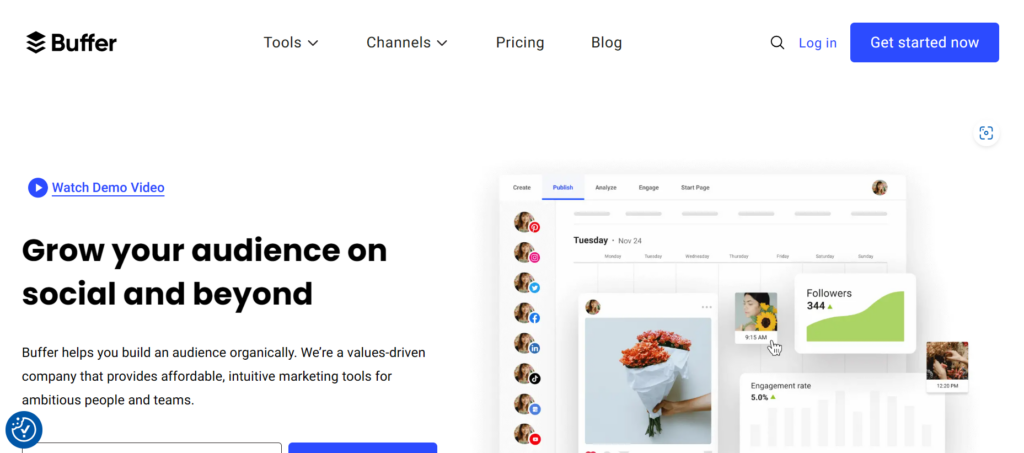
Some top features include AI-powered content repurposing, a built-in landing page builder called Start Page, smart alerts to surface comments needing attention, and educational resources to help users gain proficiency over time.
While barebones compared to premium products, Buffer’s intuitive design, lifelong free tier, and regular updates make it an excellent starting point for those just venturing into the world of digital PR and online community building. Its simplicity has won fans across developers, marketers, and CEOs scaling modern brands efficiently on emerging platforms.
5. Sprout Social – Powerful Reporting Dashboards
Sprout Social steps up to compete with heavyweights like Hootsuite by integrating key capabilities spanning social publishing, engagement, team collaboration, robust reporting, and optional CRM functionality within its all-in-one platform.

Its detailed charts and visualizations aim to transform raw user data into actionable insights that help optimize effectiveness. Many users praise Sprout Social’s reports as some of the clearest, easiest to understand breakdowns available in this industry.
Although its calendar interface could use improvements, Sprout Social has established itself as a scalable solution trusted by mid-market brands and agencies to enhance engagement across owned channels while demonstrating ROI of marketing activities. Its top-notch customer support sweetens the deal further for businesses.
6. Brandwatch – All-Inclusive Yet Imperfect
Formerly known as Falcon.io, Brandwatch aims to be a one-stop-shop covering everything from publishing and engagement to competitive benchmarking, first-class analytics, customer experience management, and a DIY landing page builder.
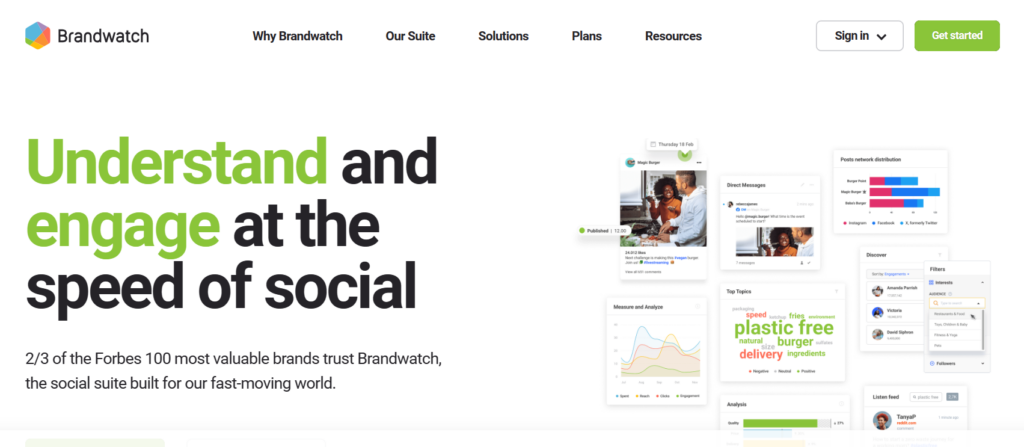
On paper, it offers all key ingredients needed to strengthen digital presence and tap rich user sentiment data. However, several users report experiencing glitches with the platform over time. Some have also flagged inconsistent support for visual platforms like Instagram and TikTok along with room for improving automated insights.
While feature-rich on the whole, Brandwatch will require commitment from businesses to look past its rough edges. For sophisticated analytics needs, it remains a strong contender – as long as user experience deficiencies don’t outweigh its technical strengths for your use case.
7. SocialPilot – Affordable Basics
As one of the more affordable options out there, SocialPilot attracts budget-conscious small businesses with its easy-to-use interface for cross-posting to linked channels and simplified content curation features.
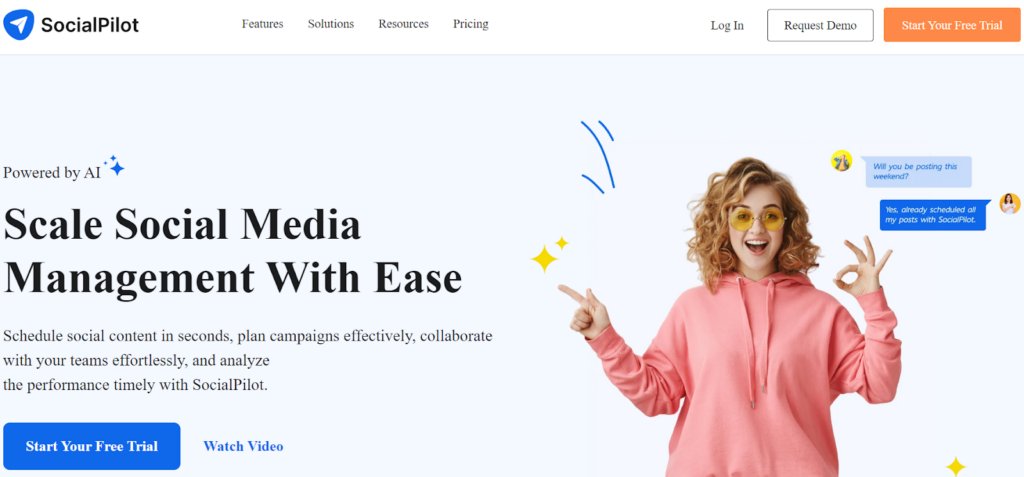
Key criteria it ticks include support for over 50 social networks, team collaboration tools, calendar-based scheduling, and integrated AI for auto-generating hashtags and copy variants.
Though lighter than counterparts, SocialPilot strikes an ideal balance between essential features and reasonable pricing. However, it may lack certain advanced analytical capabilities expected at the enterprise level. Overall, a great starter tool for newbies and solopreneurs.
8. CoSchedule – Rock-Solid Content Planning
CoSchedule pitches itself as a winner for the ‘best marketing calendar’ stake, bringing all your social, blog, email, and event activity under one roof for collaborative planning and execution.
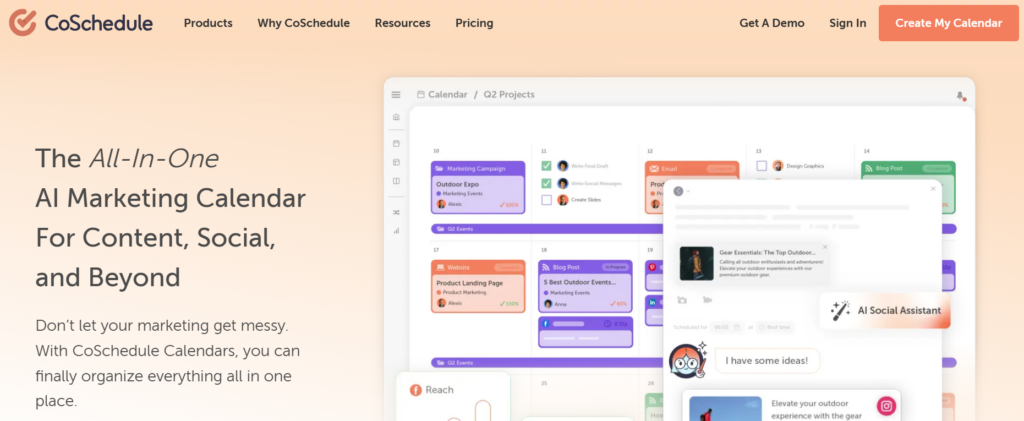
With its clear calendar interface, automated social publishing, reusable content templates and ReQueue feature to resurface old hits, it delivers an intuitive visual workflow appreciated by content teams of all sizes.
Still, some brands find its interface overwhelming initially while others demand more inclusive features for the asking price. Nevertheless, CoSchedule remains a go-to for digital PR and inbound teams juggling publishing across multiple channels smoothly each month.
9. SocialBee – Emphasis on Engagement
SocialBee prioritizes user engagement with capabilities like generating post variations to recycle evergreen content while keeping it fresh. Its centralized dashboard organizes all social accounts for simplified oversight. Additionally, SocialBee facilitates cross-channel publishing and analytics inclusive of major networks.
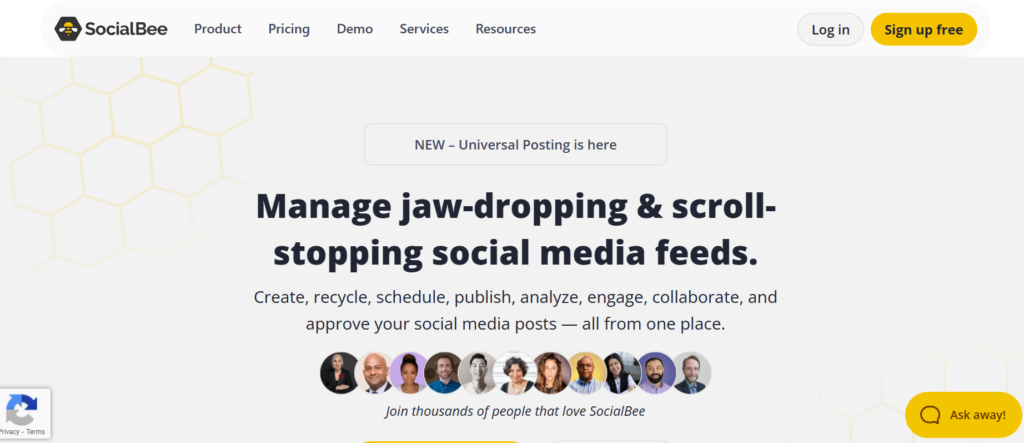
While its interface may not be the most visually appealing, satisfied users appreciate SocialBee’s emphasis on engagement optimization through tactics like permission-based collaborative workflows and multilingual support accommodating diverse audiences globally. It presents a well-rounded option for international businesses.
10. Loomly – Unique Custom Networks

Loomly differentiates through its ability to create custom social networks that publish to any external service like your blog, email list, or beyond – all via seamless Zapier integration.
This expands its utility for syncing updates everywhere. Otherwise, Loomly is fairly basic, lacking some standard features present even in free tiers of major competitors. Still, as a versatile multi-channel publishing option, it deserves consideration for specific automation use cases.
Upbeat Agency offers a comprehensive suite of specialized TikTok marketing services to help businesses unlock the full commercial potential of this powerful platform. As a dedicated TikTok agency, they have the expertise to develop optimized targeting strategies, produce engaging native content, manage impactful influencer campaigns, and implement data-driven paid ads tailored for each client’s unique goals.
Making Your Choice
Each of these 10 leading social media management tools brings unique strengths. But your pick ultimately depends on hard factors like team size, budget, technical competence, industry, scalability needs, and desired level of control over analytical capabilities and automation.
Carefully assess core and optional features, consulting reviews from experts and existing customers within similar domains. Request generous free trials from top contenders to test interface compatibility before any investment.
With the right selection aligned with your strategic growth goals, these platforms empower businesses of all sizes to engage audiences proactively, optimize efforts, and reap the rewards of streamlined digital conversations.
